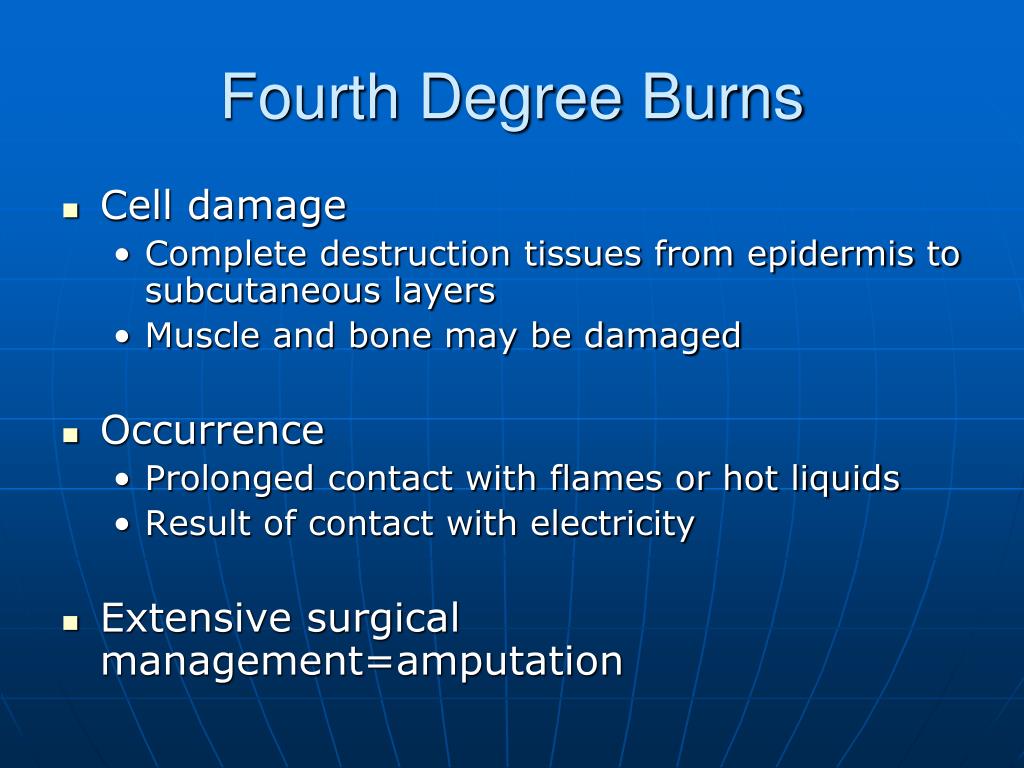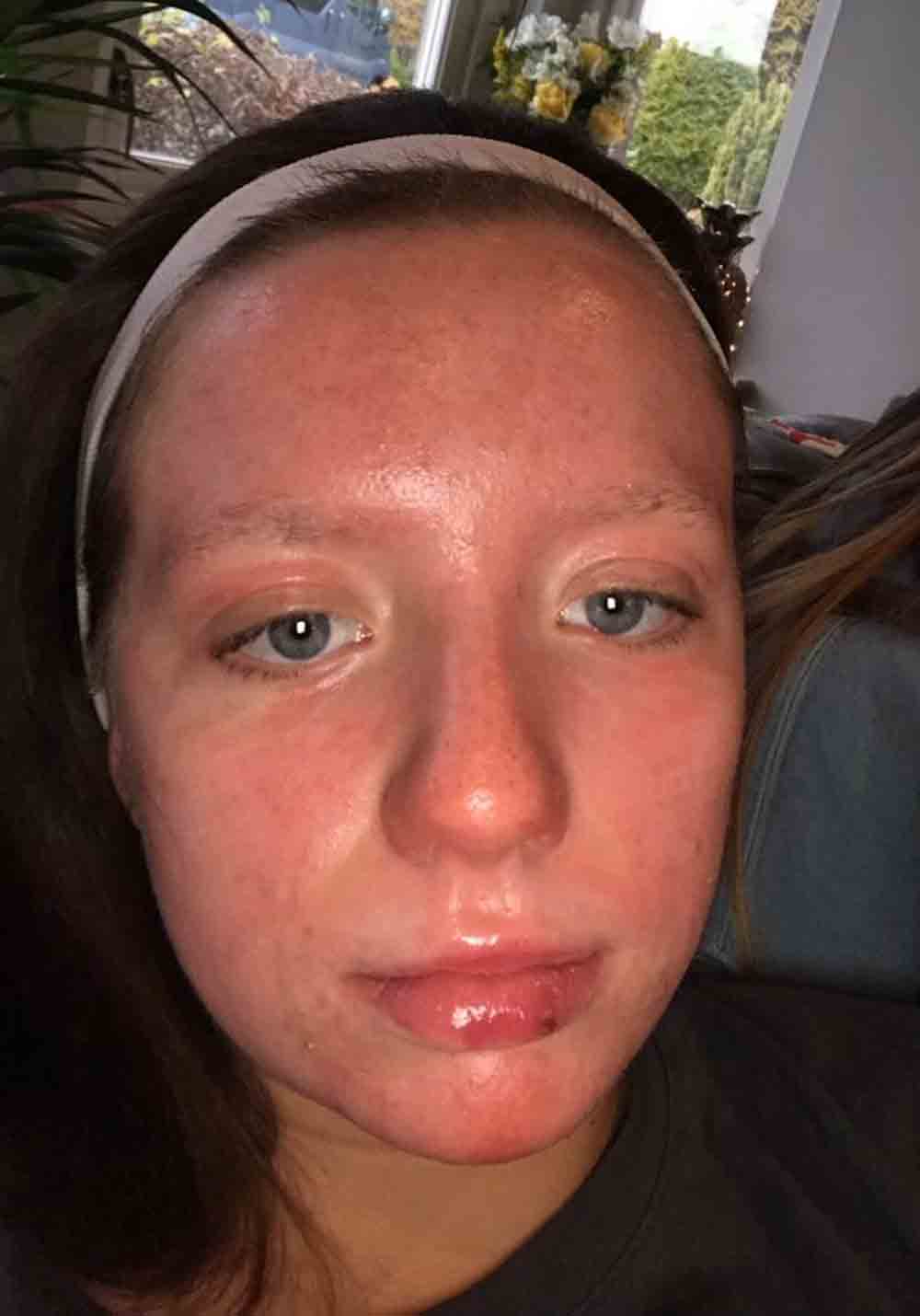

Some 2nd-degree burns may need excision of damaged skin followed by skin grafting. Fifth degree has charred, white skin, and exposed bone. Cover the burned area with a sterile bandage or a clean sheet. Wound healing occurs within two to three weeks. Fourth degree shows charred skin with possible exposed bone.DO NOT immerse large burn areas in water.


If not near a medical facility, apply bacitracin ointment or honey on broken blisters to prevent infection (this is the only situation in which bacitracin or honey should be applied to burned skin). First-degree burns don't blister and only involve the top layer of the skin. The fatality rate for fourth-degree burns is high, and if you survive, you will require extensive medical treatments such as skin grafts.Third-degree burns involve damage to all layers of the skin, while fourth-degree burns may. You may also cover the area with a cool compress, then carefully remove clothing that is not stuck to the skin. Second-degree burns affect deeper layers of the skin and cause blisters and white, wet, and shiny skin. Run cool water on burned area for 5 to 10 minutes, and cleanse with mild soap.DO NOT remove clothing that is stuck to the skin.DO NOT use burn care or other ointments for 24 hours to avoid sealing in the burn.Any burn to the eye requires immediate emergency help.Take ibuprofen or acetaminophen to relieve pain and swelling.DO NOT apply oil, butter, or ice to the burn.Run cool water on burned area for 5 to 10 minutes or cover the area with a cool compress.


 0 kommentar(er)
0 kommentar(er)
